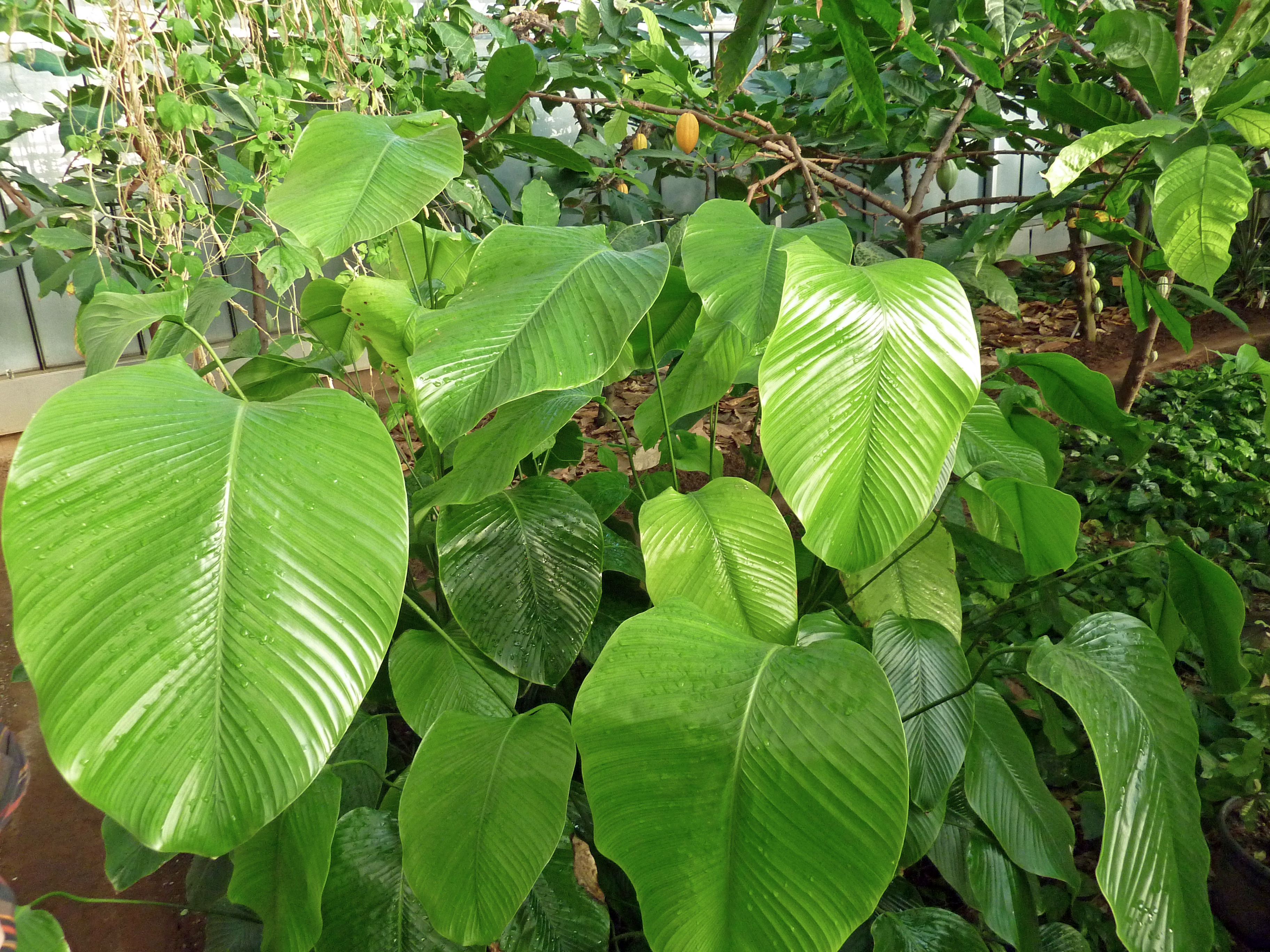Thaumatococcus daniellii

|
|
Thaumatococcus daniellii Common Names: Miracle Berry, Katamfe, Sweet Prayer
Plant, African Serendipity Berry Scientific Classification Kingdom: Plantae Phylum: Tracheophyta Class: Liliopsida Order: Zingiberales Family: Marantaceae Genus: Thaumatococcus Species: T. daniellii Synonyms: Donax daniellii (Benn.) Roberty, Monostiche daniellii (Benn.) Horan., Phrynium daniellii Benn. Morphological Description Thaumatococcus daniellii, commonly known as the Miracle Berry or Katamfe, is a
rhizomatous, perennial herb reaching 2–3.5 m in height. Its key features
include: · Leaves: Ovate-elliptic, 30–60 cm long, 20–40 cm wide, glossy dark
green, arising singly from rhizome nodes on petioles up to 2 m long · Flowers: Pale purple, 3–5 cm long, in single or branched spikes
emerging from the lowest node, blooming March–August · Fruit: Fleshy, trigonal, 4–6 cm long, dark red-brown when ripe,
containing 3–4 black, hard seeds enveloped in a sweet, yellow basal aril · Rhizome: Thick, spreading, enabling vegetative propagation The fruit’s aril
contains thaumatin, a protein 2,000–3,000 times sweeter than sucrose, used as a
natural sweetener (Fern, 2024). Distribution and Habitat Thaumatococcus daniellii is native to West and Central Africa, from Sierra Leone to
the Democratic Republic of Congo, including Nigeria, Ghana, and Cameroon. It
has been introduced to Australia and Singapore. It thrives in: · Ecosystems: Lowland tropical rainforests, secondary forests, and forest
understories · Climate: Warm, humid, with temperatures of 15–35°C and rainfall of
1,700–2,300 mm annually · Soils: Well-drained, loamy to clayey, acidic (pH 4.5–5.0) · Altitude: 0–1,200 m Ethnopharmacology Thaumatococcus daniellii commonly known as the sweet prayer plant or miracle fruit,
is a West African plant valued both for its unique natural sweetener,
thaumatin, and for its diverse medicinal properties. Traditionally, various
parts of the plant, including the leaves, fruits, seeds, and rhizomes, are used
in herbal medicine to treat ailments such as diabetes, hypertension, stomach
disorders, inflammation, and wounds. The seeds and leaves are often used for
managing high blood sugar, as studies have shown hypoglycemic effects in
diabetic animal models. Also has antioxidant, antimicrobial, anti-inflammatory,
and analgesic activities. The sweet protein thaumatin, extracted from the fruit
aril, is also reported to have antioxidant and potential immunomodulatory
effects. In addition to its pharmacological uses, the large leaves are widely
employed in food preservation and packaging, further extending its practical
value in traditional settings. · Antioxidant Activity: It is use for oxidative stress-related
conditions. · Antimicrobial Activity: Leaf extracts inhibited Staphylococcus aureus (MIC 0.058 mg/mL) and Escherichia coli (MIC 0.5 mg/mL), validating its use for
infections and wound healing (Adeogun et al., 2016). · Antihyperglycemic Effects: Leaf extracts reduced blood glucose by 60%
in diabetic rats at 500 mg/kg, enhancing insulin sensitivity and supporting its
use for diabetes management (Adedosu et al., 2017). · Hepatoprotective Effects: ethanolic extract of T. daniellii leaves
(ETD) on liver function in rats shows increase in superoxide dismutase (SOD)
activity and reduced glutathione (GSH) levels, alongside a decrease in
malondialdehyde (MDA) concentrations, indicating reduced lipid peroxidation.
Histopathological analyses further confirmed the protective effects of ETD on
liver tissues (Enaregha et al., 2021). · Anti-inflammatory Effects: Fruit extracts reduced. · Wound Healing: Methanolic leaf extracts enhanced wound. · Antidiarrheal Activity: Root bark extracts reduced diarrhea
frequency. ⚠ Toxicity Profile: No significant toxicity is reported for Thaumatococcus daniellii. Rats administered with high doses of aqueous
leaf extract showed increased liver enzymes and histological alterations in
liver tissues. However, lower doses did not produce significant adverse effects,
underscoring the importance of dosage in therapeutic applications (Segun et
al., 2021). Additional Uses · Culinary: The fruit aril, containing thaumatin, is used as a natural
sweetener for palm wine, bread, and sour foods; leaves wrap foods like moi-moi,
imparting flavor (Fern, 2024). · Industrial: Seeds produce a jelly-like substance used as an agar
substitute; thaumatin is a commercial sweetener. · Construction: Petioles are woven into mats, baskets, and roofing
materials; leaves serve as biodegradable packaging (Burkill, 1995). · Economic: Leaf and fruit sales support rural economies in Nigeria and
Ghana, enhancing food security (Arowosoge & Popoola, 2006). References
External Links More Pictures |
|
| Compounds of Thaumatococcus daniellii |
|
| References |